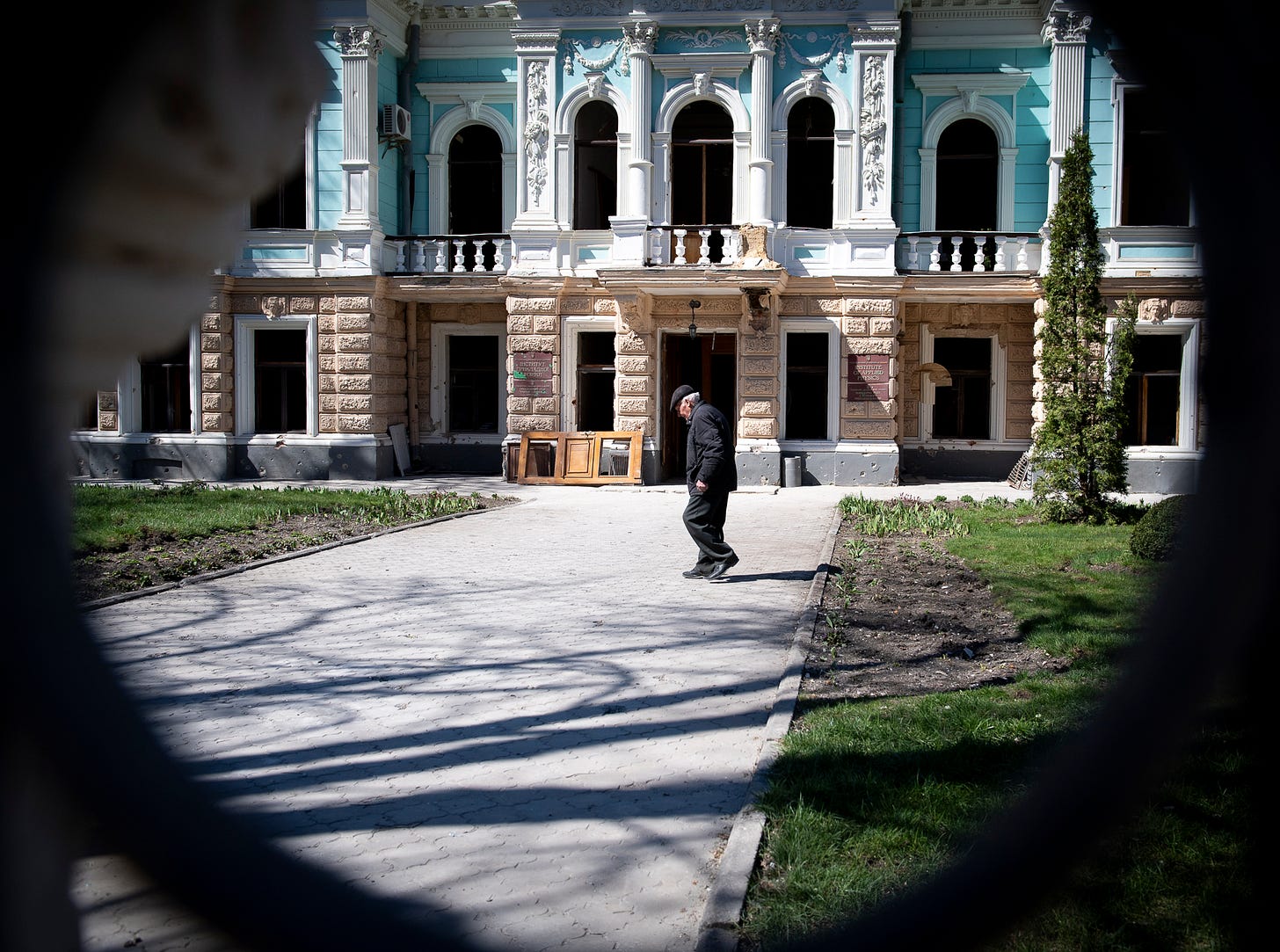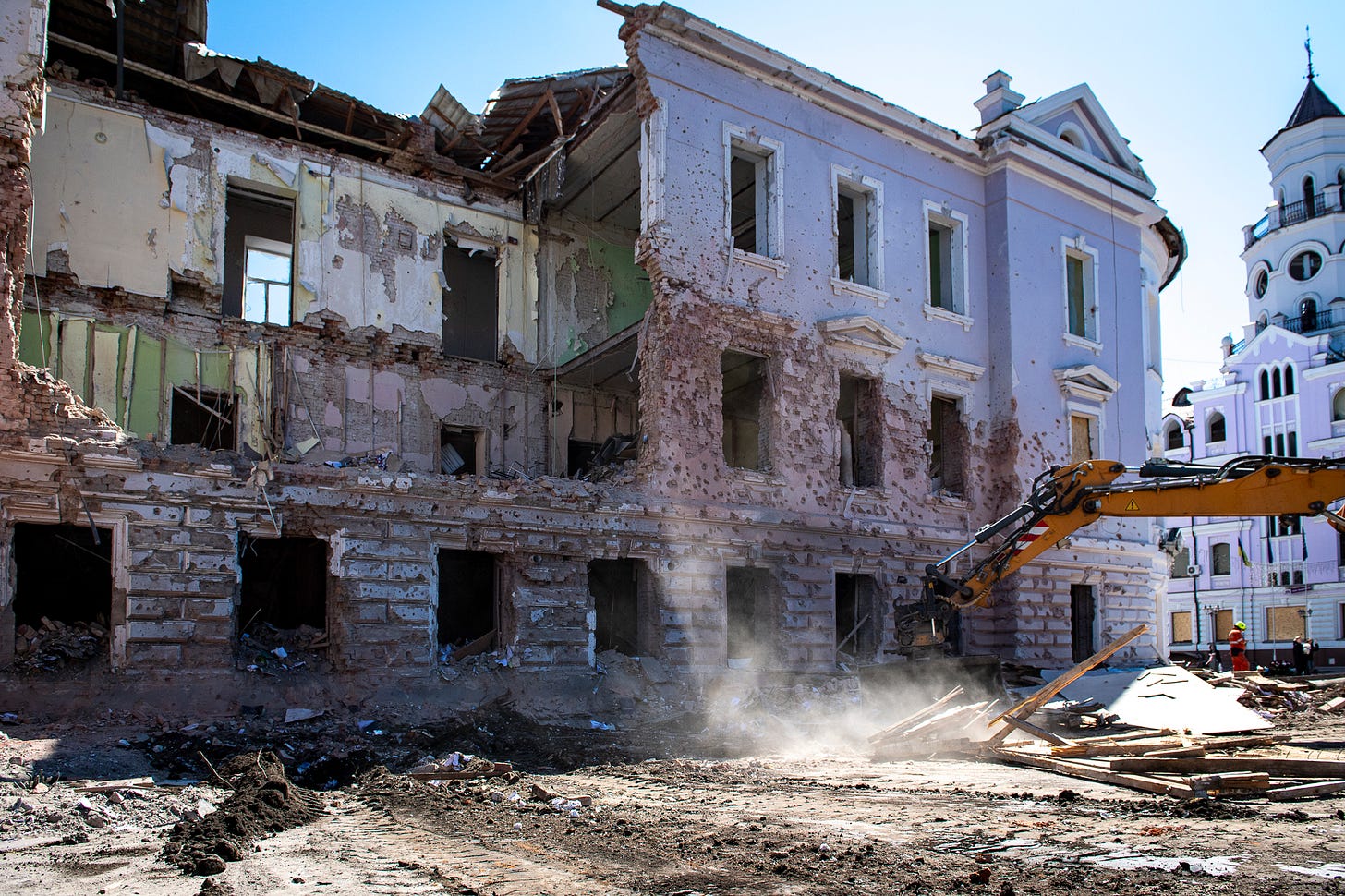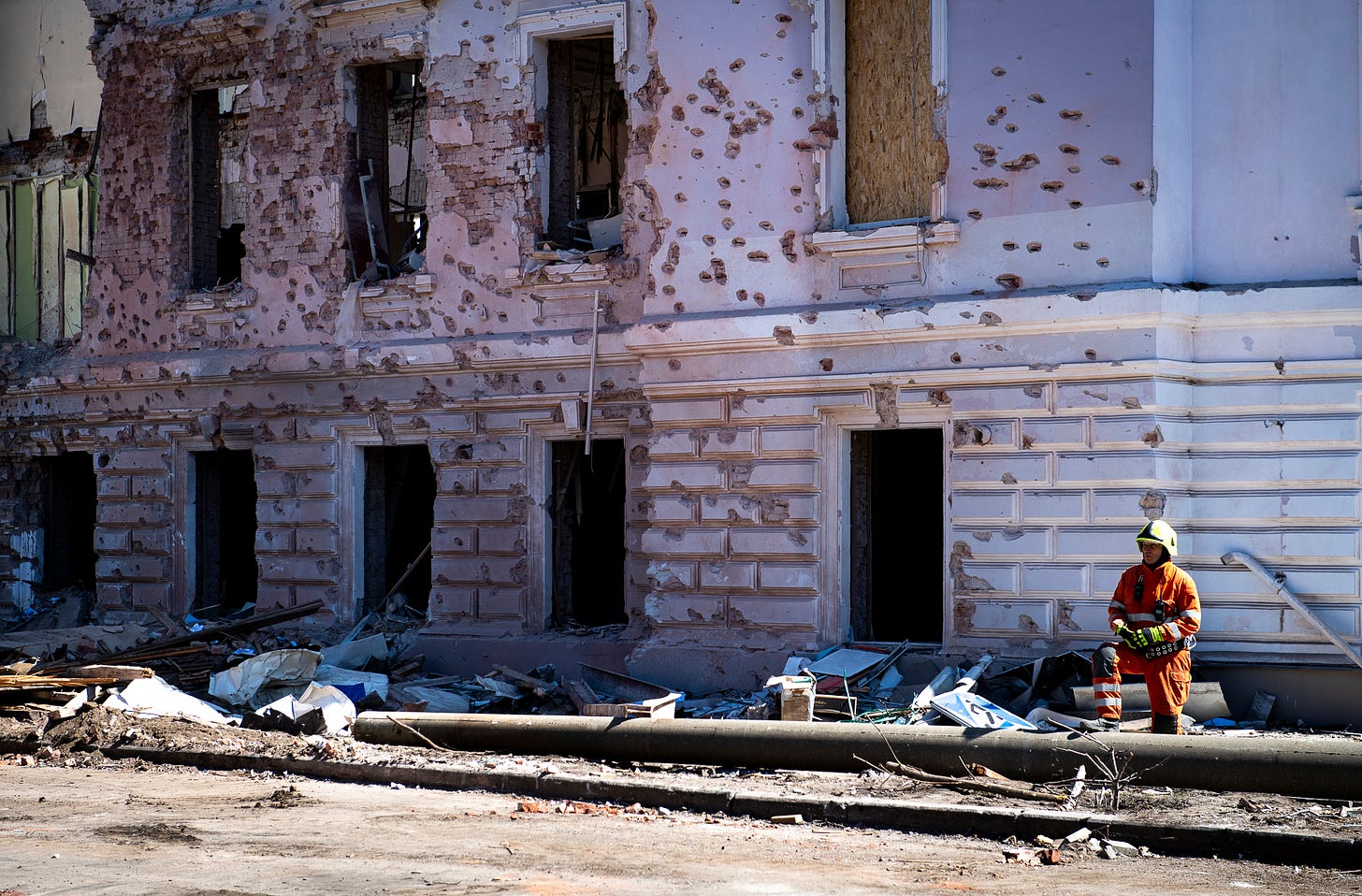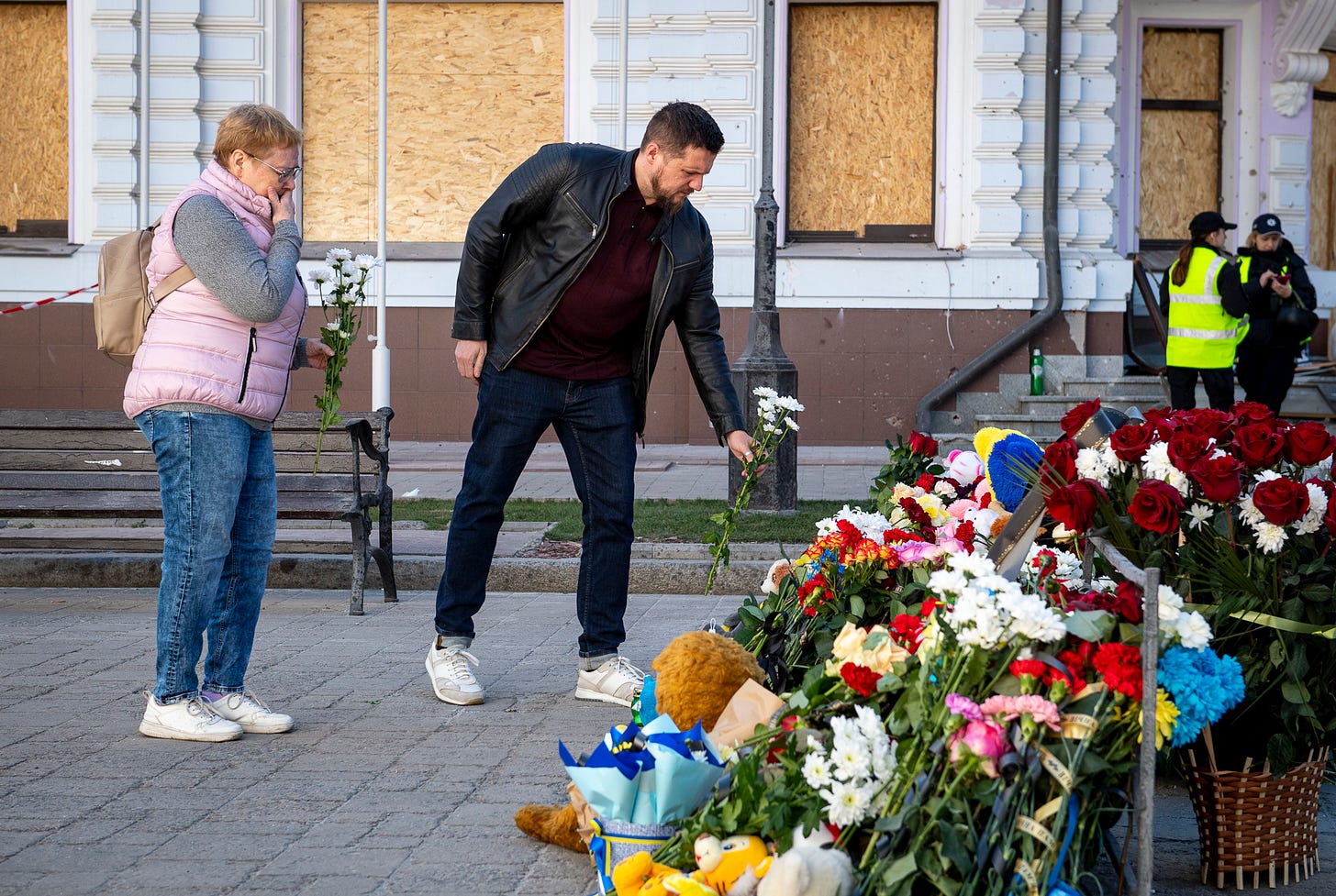Sumy's Silent Scream
Photographer and journalist Paul Conroy reports from Ukraine in the wake of Russia's brutal Palm Sunday attack
The young girl, dressed in her Sunday best and clutching a small bouquet, was too shy or frightened to lay them alongside the growing pile of tributes to the thirty-five victims of Palm Sunday's missile attack on Sumy. Resisting all attempts by her grief-stricken mother to step forward, she silently absorbed the scene as first responders and an army of workmen went about the grim business of clearing the aftermath.
As bulldozers cleared the rubble from the gaping scar of the neo-classical building, thousands of holes left by the deadly cluster munitions were visible in the crumbling facade. An air raid siren began to wail, and for a moment, people paused and glanced nervously at the sky before resuming their Sisyphean task of clearing the wreckage.
While members of the power grid teams dug holes to replace destroyed power lines, news circulated that Volodymyr Artiukh, the governor of Sumy, had been dismissed by Kyiv after plans for a military award ceremony in Sumy on Sunday emerged. Artiukh later confirmed that the ceremony took place but denied any involvement.
Less than forty-eight hours earlier, Steve Witkoff, a property tycoon and Donald Trump’s golfing buddy – now tasked with bringing peace to Ukraine – had stood with his hand on his heart, greeting Vladimir Putin in the opulent surroundings of St. Petersburg’s presidential library. At a press conference afterwards, Witkoff was typically bullish, stating, "We might be on the verge of something that would be very, very important for the world at large."
Putin’s response was swift and brutal. As churchgoers gathered to celebrate Palm Sunday, soldiers of Russia’s 448-missile brigade launched an Iskander missile into the city centre. When rescue workers raced to assist the wounded, a second missile, in a classic ‘double-tap’ strike, was launched, resulting in carnage. Thirty-five people, including two children, were killed, and hundreds were injured.

Watching the clean-up operation, a masked soldier, furious that the large number of military personnel in the city centre could serve as a pretext for justifying the attack, expressed his suspicion that the plans had been leaked to the Russians.
Angelika, a volunteer clearing the scene, was emphatic. “This happened because Russia is killing us. Russia wants us to be killed. It doesn’t matter if there was a military presence or not. In the end, this is a civilian building in the centre of the city.”

For now, however, words hold little meaning for the steady stream of mourners arriving to lay flowers and leave soft toys at the makeshift memorial. They seek no answers; instead, this is an opportunity to share mutual pain and shed silent tears. Their incomprehension of the scale of the massacre is evident on their anguished faces.
Meanwhile, on Air Force One, Donald Trump excused the attack and defended Russia, asserting it was “a mistake”. Later, at the White House, Trump stated, “You don't start a war against someone 20 times your size and then hope people give you some missiles”. His apparent disconnect from observable reality brings America another dangerous step closer to complete alignment with Russia regarding Ukraine.
In Sumy, an elderly lady wanders the street. At first, she seems to be in shock, but she is on a mission. In her hand, she holds a tattered plastic bucket. Pausing at a concrete lamppost, she inspects it for damage and discovers a hole left by cluster munitions. Taking a trowel from her pocket, she patiently fills the hole with cement from the bucket before moving on to the next lamppost. The people of Sumy may be down, but they are certainly not out.







